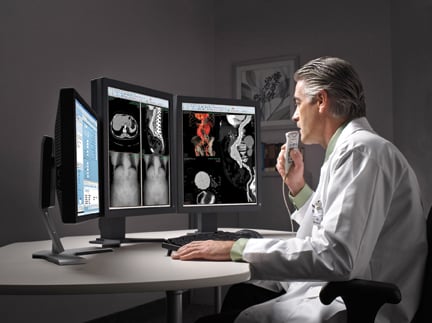
Picture archiving and communication systems (PACS) have been around for more than 20 years, and today’s marketplace includes a lot of satisfied customers who recognize the many benefits they have gotten from them. “The PACS market has achieved a stage of maturity and a track record of documented benefits – savings from eliminating film, faster turnaround times – that leave electronic health record (EHR) advocates envious,” said a recent KLAS report, “PACS 2011: A Victim of its Own Success.”
But as providers start to consider replacing current systems, they will be looking for even more, as changes in healthcare are creating the need for additional features. “Typically, some of the challenges people are seeing today is trying to get a radiology PACS system to act as an enterprise archive or vendor-neutral archive, that is, some type of imaging archive that can help image-enable an electronic medical record (EMR),” said Ben Brown, author of the KLAS report. “To launch a PACS from an EMR is not all that unique, but the way the radiology PACS works with regard to workflow and utilization by other departments is not always seamless.”
While it might not be the driving force behind replacing a PACS, EMR image enablement is going to be an important consideration when choosing a new system, Brown noted. With worries about influences like reimbursement reductions, Stage 2 meaningful use’s proposed inclusion of imaging, and other legislation, providers are concerned with how the PACS can improve radiology workflow.
Brown said as they look to replace their systems, providers want a whole slew of forward-thinking tools to enhance workflow, such as dose tracking modules integrated into the PACS; voice recognition systems; business intelligence tools like management reporting, radiology department analytics and critical results; teaching files; advanced visualization, etc. Even though most providers are happy with their current PACS vendor, the KLAS report said when it comes to replacement, they will need to be convinced their supplier can provide such tools or they will look elsewhere.
“Providers will look for a vendor with a proven record of ongoing, consistent development and investment in R&D,” Brown said. “Vendors will have to keep moving forward with innovations in technology imaging, including improved workflow for technologists, administrators and referring physicians, as well as radiologists. They also will need improved imaging workflow for different clinician specialties, like women’s imaging versus cardiac, for example.”
Brown foresees a steady pace of replacements happening, especially at the high end of the market (i.e., larger hospitals) and in situations where radiology groups are working with multiple clinics and hospitals. To stay in the game, vendors must be seen as innovators and partners that can provide solutions into the future. As noted in the KLAS report, “As demand for imaging innovation evolves, so do the technology requirements for vendors wanting to win business in the PACS replacement market.”
Right now, with some vendors, development is slow and commitments aren’t followed through, Brown said. Such vendors will not be seen as a desirable long-term partner.
“A PACS vendor does need a lot of courage and financial stability to be able to make the leap into a new generation, no matter how much proof there is that the current generation is a dead end,” Sectra said in an article, “Key Considerations When Replacing Your RIS/PACS,” disseminated at RSNA. “The vendor also needs to be able to see past current buzzwords and see the true need driving the buzz. A truly future-proof vendor does not act on buzz but stays on top of trends to be able to deliver customer-driven development when it’s needed.”
For more information about the KLAS report, visit www.KLASresearch.com.
This article appeared as the introduction to a chart on PACS in the May 2012 issue.


 December 01, 2025
December 01, 2025 









